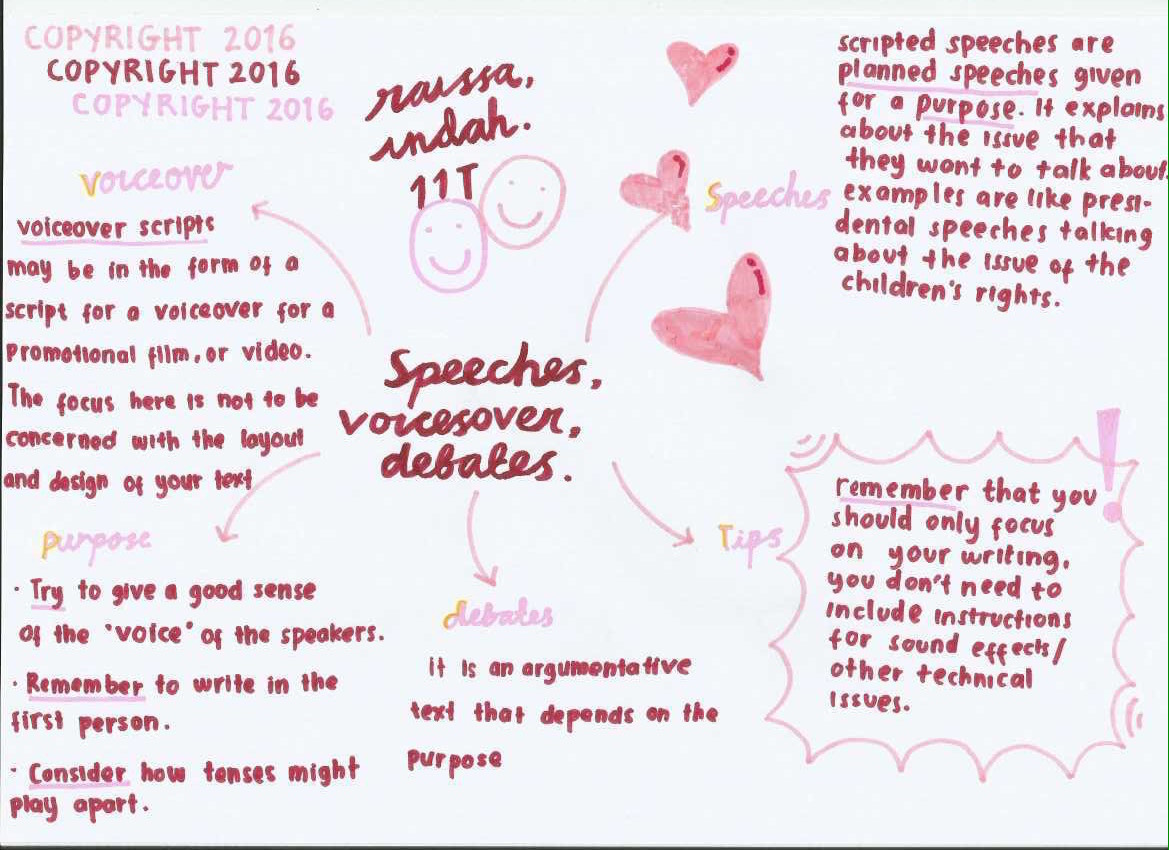This time, we started our first session of this week’s English class with a TOEFL listening quiz. I didn’t know that the TOEFL listening quiz was going to be in this week’s first session, so I wasn’t very optimistic about the upcoming result.
During the TOEFL listening quiz, we have to answer 8 questions. From all 8 questions, I only got 3 correct answers, and I think I’m supposed to be disappointed but I’m not. Just like what J.K Rowling said, “It is impossible to live without failing unless you live so cautiously that you might as well not have lived at all, in which case you have failed with default.”
After we’re done with TOEFL listening quiz, we continued our study to our main material which is text types. Actually, we have learned this before in the first half semester, but this time the text types have more variation. Based on the Cambridge International AS and A Level English Language, there are 9 text types, they are:
- Letters
There are two types of letter, they are formal and informal letters. When writing letters, remember to use a capital letter at the start of each line of the address and make sure it is written in a blocked format. The close of the letter can be chosen from a range of possible options such as Best wishes, Yours truly, Regards, and so on.
- Diaries
Diaries are often written in a time of crisis or as a way of recording personal, often reflective thoughts, written in a confidential tone, and written using a mix of present, future, and past tense forms to express how the writer has felt about past events.
- Autobiography and memoirs
Autobiographies and memoirs are ways in which people assess and recount past events that have had an impact on them, or in which particular people they have met or known have made an impression. In writing autobiographies or memoirs you will need to write in the first person and convey the sense of an intense experience or event, rather than a simple narrative or recording of routine everyday occurrences.
- Biography and character portraits
Biographical writing is a form of writing in which a writer focuses on the life or character of someone interesting. In biographical writing, you will write mainly in the third person, describe an event, and adopt a clear position and sense of voice about the person.
- Articles and features
Extended articles and features may come up in ‘writing for a specified audience’ questions. In writing articles and features, you need to have a clear structure and make use of appropriate headlines and subheadings to divide the material into sections.
- Reviews and writing to comment
Reviews both comment on and describe an event or experience. They are a form of persuasive writing in that the writer’s viewpoint/opinion is key to the way the text works. Reviews generally provide an overview of the ‘key facts’ of the experience, suggest the writer’s expertise or knowledge of the field, etc.
- Speeches, voiceover scripts, and debates
Scripted speeches are planned speeches given for a purpose, while voiceover scripts may be in the form of a script for a voiceover for a promotional film or video, etc. The focus in voiceover scripts is to the text itself. The conventions for speeches, scripts, and debates will largely depend on the purpose.
- Promotional texts
Promotional texts may include advertisements, material from brochures, leaflets, and so on. However, the definition can be expanded to include texts which promote a particular view on a topic.
- Campaign Literature
Campaign literature on a range of issues share similarities with other forms of persuasive texts and it’s directly appealing to the reader, setting out risks and rewards and so on, all add to the force of the text.
The activity for this material is to find a partner and create a mind map based on the topic chosen by our English teacher. I was paired up with Raissa and we got speeches, voiceover scripts, and debates. Actually, we have to present our mind map in front of the class, but we didn’t have enough time to do it, in addition, me and Raissa were the last one to submit the mind map on that day. Lastly, I didn’t attend the second session of English class because I had a technical meeting in HighScope International School for MUN (Model United Nations).
The attachment below is the mind map that me and my partner created:

